Little project for a bomber I’ve been doing. She’s a successor to the C44 Heavy Bomber.
STORY
In the annals of decommissioned engineering design, one project stands out. She's a mediocrely-armored, six-engined bomber with five sets of landing gear and cannons on her. This is the B-55 Stronghold Superbomber.
In 1944, after the sinking of the USS Prowess under her own fire, Congress ordered the construction of land-based bombers to strike at enemy warships. Multiple designs were considered, but only four were actually put in service. The most successful was the B-55, having a 40-bomb bomb bay, wing armor, and multirole cannons with fuse shells (essentially making the bomber an airborne anti-aircraft platform). She was first put to service over Okinawa as a plane called the "Half-assed" (the awkward design of the tail fin was the subject of numerous jokes about the aircraft), and expectations amongst the bomber crew were low. The forty bombs were dropped on positions and they were about to turn south back towards Iwo Jima. All of a sudden, several Japanese fighters intercepted the bomber on her turn, and this was where she shone the best. One of the most well-known nicknames was "Bucking Bonnie", because her maneuverability was quite literally parallelable to the F4F-3 Wildcat fighter (not my model, but the real thing lol). Evading and firing off fused shells, this weird mega-fortress attracted other planes to the aircraft. The pilot managed to get his plane away from Okinawa and they safely landed on Iwo Jima. All of the crew were ok, but the turns had given them minor injuries due to a mostly lack of seatbelts, and analysis of the plane revealed numerous bullet holes in the aircraft's belly. This was the most critical design flaw of the aircraft: no side or belly-mounted artillery pieces to evade fighters on those axes. Nevertheless, this was compensated for with relatively high structural integrity and the bomber was renamed "Bucking Bonnie" (this was the origin of the nickname that would become famous with the plane, leading to the Japanese to call them "Bonnie" bombers). Recklessness was a problem, however, because many bomber crews believed the structural integrity combined with the absolute power of the six engines made the bomber an impromptu DIVE BOMBER. This was of course not the case: the bombs released would collide into each other causing devastating explosions. This type of incident claimed two planes, when they both went dive-bombing and one of them released her cargo (one survived), detonating herself and sending debris onto the other diving plane (all but one of the ten-man crew survived).
In 1945, a B-29 Superfortress bomber was forced into landing on Soviet territory after suffering immense structural damage. The Soviets interned the pilots and began reverse-engineering the Superfortress to see how she worked. Afraid the B-55 would undergo a similar fate, the Americans took the plane out of service over Japan (any operational plane that was allowed there was pressured to not land in the Soviet Union under any circumstance, even life-threatening. Failure to do so would have the pilots returned to the United States and executed for treason).
The B-55 was officially decommissioned in 1949, with the introduction of the Stratobomber in 1947, its design being heavily influenced by the jet era and the B-55. There were no surviving examples of the bomber (as all were demolished after seizure), except for one.
"Bucking Bonnie", the most famous B-55 of them all, was tucked in a glass casket, and buried under sixteen feet of soil on Long Island, New York. A memorial sits on her grave, with the glass surface allowing visitors to look down and see the scale of the aircraft.
Her legend lived on, as with the release of the Boeing 747 almost two decades later (1968), the Air Force considered two ideas: airborne aircraft carriers and a live-on of the B-55:
The airborne battleship (ABB).
Specifications
General Characteristics
- Created On iOS
- Wingspan 164.0ft (50.0m)
- Length 104.7ft (31.9m)
- Height 29.5ft (9.0m)
- Empty Weight 51,910lbs (23,546kg)
- Loaded Weight 71,031lbs (32,219kg)
Performance
- Horse Power/Weight Ratio 2.111
- Wing Loading 41.9lbs/ft2 (204.6kg/m2)
- Wing Area 1,695.3ft2 (157.5m2)
- Drag Points 36412
Parts
- Number of Parts 140
- Control Surfaces 5
- Performance Cost 1,539

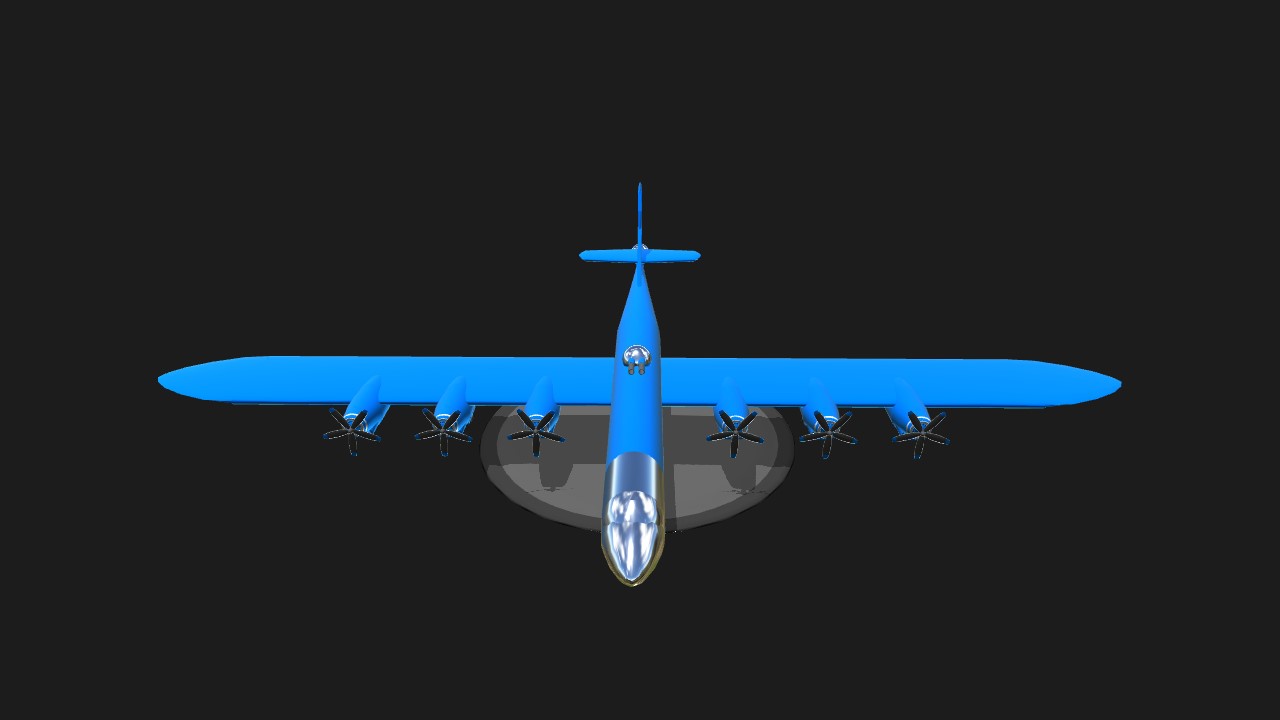

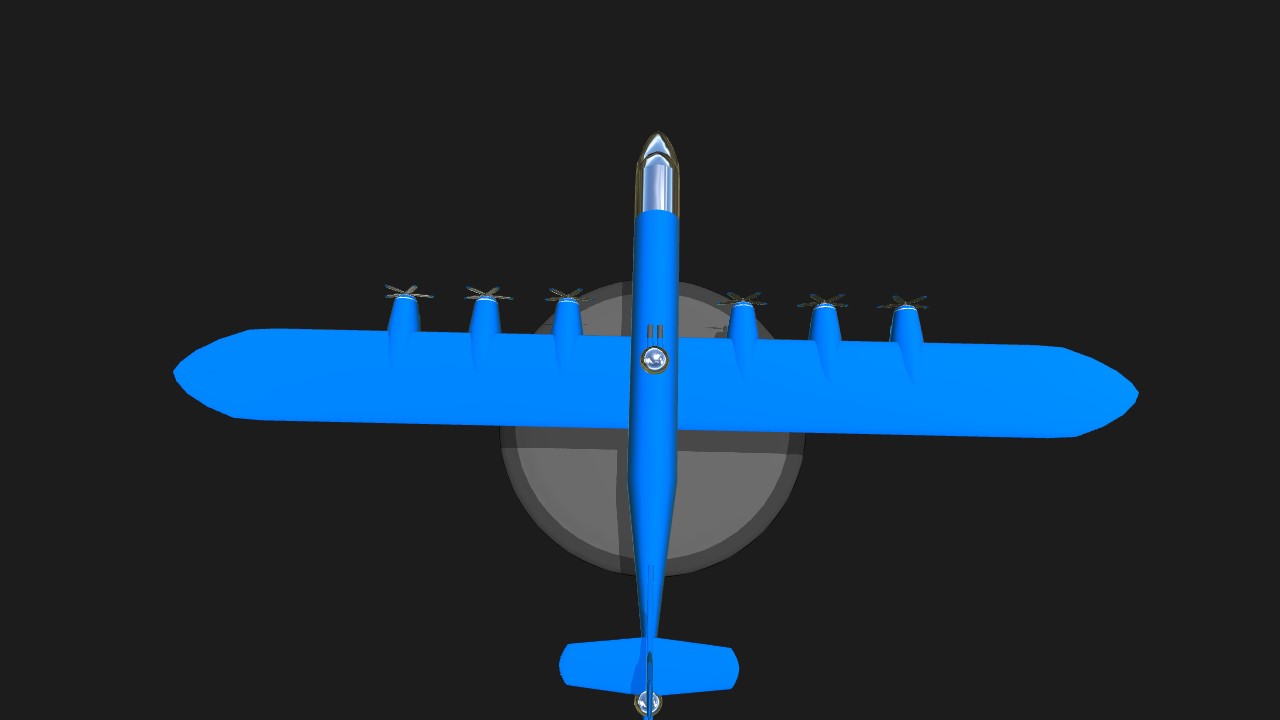
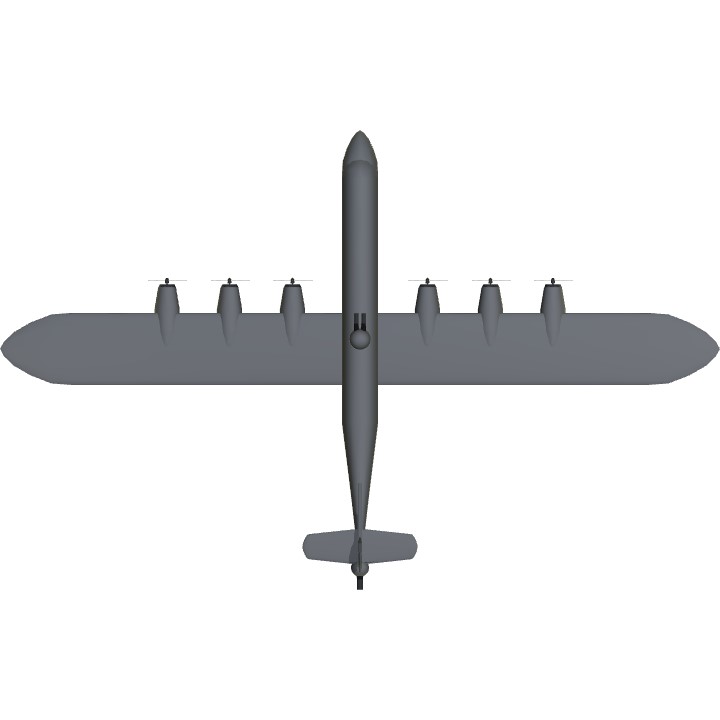
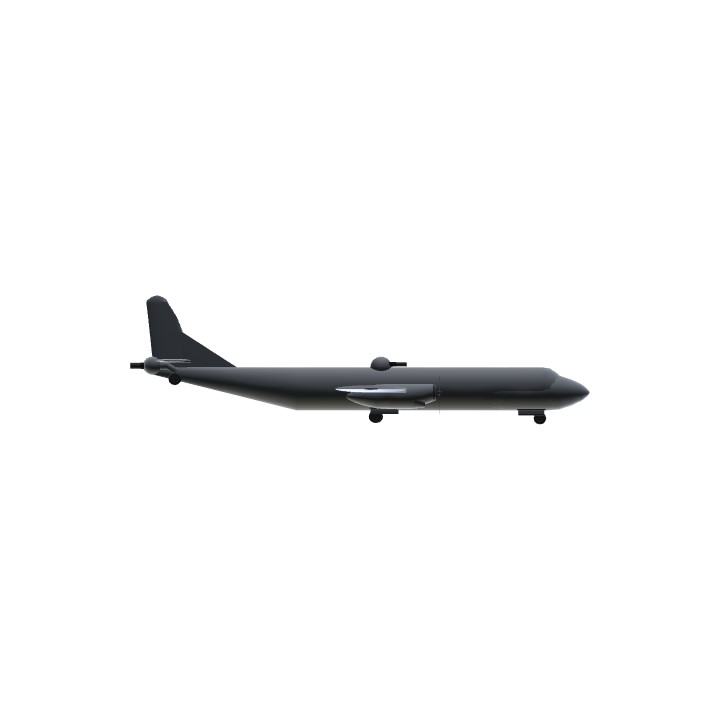
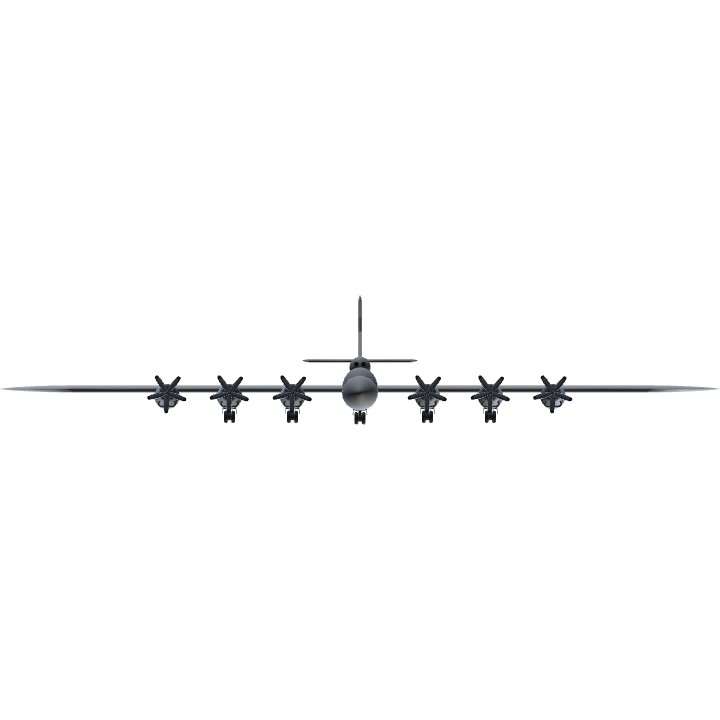
INSTRUCTIONS
AG1 to 4 all activate a section of the bomb bay, which due to time constraints hasn't been represented in the build.
.
AG5 activates the rear AA cannon. VTOL and Trim for control.
AG6 activates the top AA twin-cannon. VTOL and Trim for control.
.
Thank you, and enjoy May.
@SpartanDelta1 She's a carpet-bomber, so indeed.
Nice plane, the bomb drop delay really gives this a WW-2 bomber feel
Another problem with the bomber was with the six turbocharged engines themselves: they were TOO powerful. If one, and I mean JUST ONE, was shot off or disconnected, the plane would be done for.
I feel like a Wikipedia article after writing this...